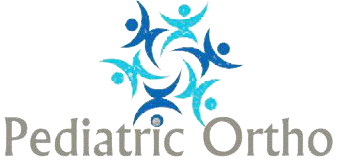Knee
Hyperextension deformity (Genu Recurvatum):
Hyperextension deformity (Genu Recurvatum):
is a deformity in the knee joint, so that the knee bends backwards. In this
deformity, excessive extension occurs in the tibiofemoral joint. Genu recurvatum
is also called knee hyperextension and back knee.

Treatment:
2 types:
Manipulation
Surgical
Flexion Deformity:
A flexion deformity of the knee is the inability to fully straighten the knee, also
known as flexion contracture. Normal active range of motion (AROM) of the knee
is 0° extension and 140° flexion. In people with a flexion deformity, AROM of one
or both knees is reduced.

Treatment:
– Casting
– Bracing
-Physiotherapy
– Surgery
Patello Femoral Instability:
Instability of the patellofemoral joint may manifest as recurrent patellar
dislocation or subluxation.

Treatment:
Conservative method
– Knee immobilizer
– Physiotherapy
Surgical method
– Stabilization of patella femoral joint
Knock knee (Genu valgum):
when a child with knock knees stands with their knees together, the feet and
ankles stay apart. In most children the legs gradually straighten with growth, and
are usually in a normal position by the time they are eight years old.
If the valgus is extreme and the patient is symptomatic ,surgical intervension is
necessary.

Treatment:
Surgery
Bow Legs (Genu varum):
when a child with bow legs stands with their feet and ankles together, the knees
stay apart.

Treatment:
– Orthosis
– Surgery
Tibial tortion:
Tibial torsion is an inward twisting of the shinbones. Tibial torsion causes a child’s
feet to turn inward. The child may look pigeon-toed. It is typically seen among
toddlers.

Causes:
Tibial torsion can happen because of the position of the baby in the uterus. It also
tends to run in families.
Symptoms:
Inward-facing toes, or intoeing appearance.
Treatment:
This condition often gets better with time. As the child grows, walking will
become more normal, usually around 5 to 8 years of age. If the case is severe,
treatment may help straighten the shinbones. Treatment may include:
Braces or special shoes
Surgery
Bowing of the tibia:
Bowing of tibia refers to bending of diaphysis with apex of curve directed
anterolaterally, anteromedially or posteromedially. Posteromedial bowing of tibia
is a congenital condition often associated with calcaneovalgus deformity of
ipsilateral foot.

Treatment:
– Surgery

